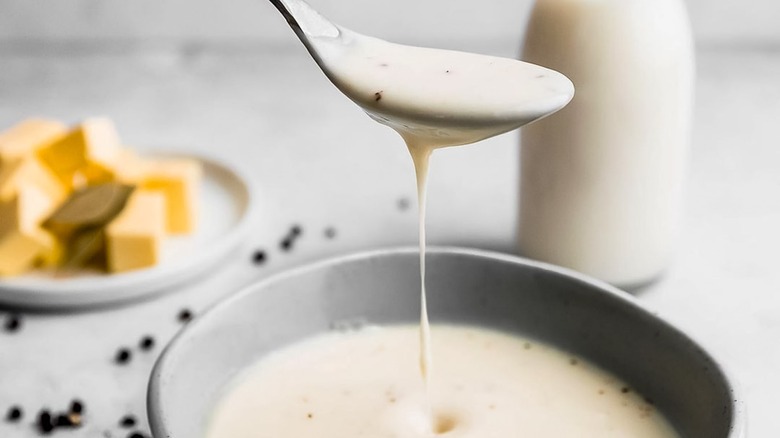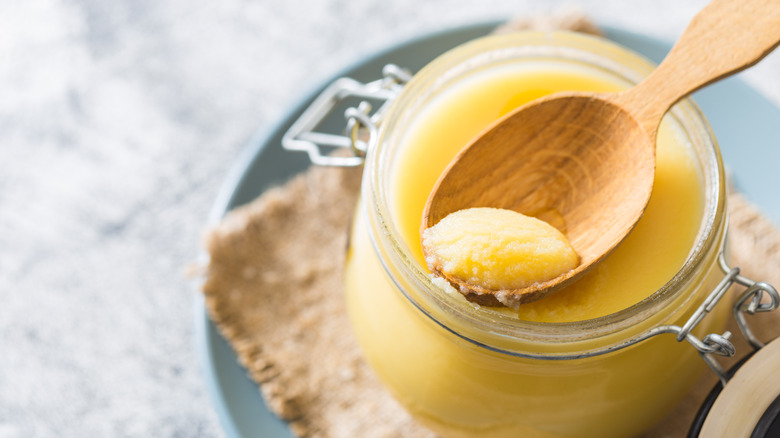The Buttery Ingredient You Should Add To Your Béchamel
Béchamel sauce is an unsung hero: Even if you don't know the name, you know the rich, creamy sauce. Béchamel is one of the five mother sauces, considered a foundation of classical French cooking, and it's used for a wide range of dishes. If you've ever had homemade mac and cheese, Southern biscuits and gravy, or a fish dish with a creamy mustard sauce, you've probably enjoyed a version of béchamel.
And for its versatility, it relies on very basic ingredients. Fundamentally, the béchamel sauce recipe starts with a roux of flour and melted butter, which is cooked down slightly so it thickens, but doesn't brown. Then, milk is added for creaminess and body, and spices like pepper and nutmeg are folded in.
But because it seems so simple, every ingredient and step matters. And everyone makes mistakes with their béchamel; you can end up with a lumpy sauce, for example, if you use the wrong ratio or pour in your milk too quickly. But chefs say there's one ingredient you can use to improve your next batch: ghee.
What exactly is ghee, and how is it different from butter in béchamel?
Ghee is a staple in Indian cuisine. It's made from butter, but while it seems similar to basic clarified butter, there are real differences between the two. When butter is melted over a low flame, the yellow fat separates from the white milk solids. If you stop here and strain the solids out, you have clarified butter. But if you keep cooking for a little longer to develop rich, nutty, toasty flavors before straining out the milk solids, you've made ghee.
Ghee is unique because, as it no longer contains water and milk solids, it can reach higher temperatures without burning or even browning. By using ghee in your béchamel, you don't have to worry about your roux darkening and compromising the traditionally pure-white color of the sauce.
Because of this, you can infuse more flavor into your sauce. Before you add flour to the melted ghee, for example, consider sauteing aromatics like shallots or onion. And yes: For traditionalists, this could make the sauce more similar to a Soubise, which, for the record, is also delicious.
Even without additional ingredients, the umami-filled quality of ghee and the fact that it does not brown as quickly as butter means you'll end up with a more consistent and tasty béchamel. And one more benefit: Although ghee does have more calories, it's actually a healthier alternative to butter overall.

